You are here
Cathedral mosque of Otrar.
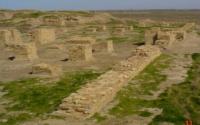
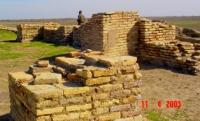
Excursion tours to monuments of Turkestan region.
“In the two hundred thousandth in Otrar… scientists, sages, skilled musicians, fortunetellers, jewelers have settled. The town had a large madrasah, a bazaar, a smithy workshop, a gurt-khan (a place where they drank wine), a bathhouse, mosques, shops... And a library. "
"Mounds of Otrar". The magazine "Around the World", 1971.
Monumental monuments of South Kazakhstan.
One of the most interesting buildings in the city of the late XIV - early XV centuries. is the cathedral mosque, located in the southeastern part of the central hillock (Akishev et al. 1986). In the 16th century, the abandoned areas of the shakhristan were rebuilt.
The construction of a monumental baked brick mosque, located in the southern part of the central hillock, dates back to the same time. The total length of the mosque remains unknown. The width of the mosque is 15.5 meters.
The building of the mosque consisted of a central hall and two wings adjacent to it. The entrance to the mihrab hall is marked with a portal. The dimensions of the central hall are 7 x 7 meters. The walls of the mihrab and the pre-mihrab niche are covered with thin ganch plaster.
The building measures 60 x 22 meters with a long axis stretching along the east-west line. This is a cathedral mosque, not a quarter one. This is evidenced by its size, characteristic building materials (burnt bricks, tiles, majolica), the presence of minarets and a powerful portal.
The Otrar cathedral mosque belongs to the buildings of the pillar-dome type, well known in the medieval architecture of Central Asia (Mankovskaya 1980: 108 - 112; Baypakov 1986: 139). The entrance in the center of the northern facade is decorated with a portal with turrets.
There are two halls on the axis of the entrance. On both sides of the halls, there were through galleries resting on columns. Ceramic facing tiles played an important role in the architectural decoration of the mosque.
Between the mosque and the residential part there is a square with a XVth century well, made of baked bricks, more than 12 meters deep, with a mouth diameter of 0.9 meters. The minaret is located in the entrance gate. It was built with circular stairs in the western minaret.
The width is 6 m. Two halls were located within. The galleries, which are inclined with the columns, were located on both sides of the hall. Decorated ceramic boards of the mosque during the excavations were obtained.
A large land is placed between the mosque and a block of flats. In the centre of the land there is a brick layered well, which is 12 m deep, and the diameter of the wellhead is 0.9 m.
Geographic coordinates of the cathedral mosque of Otrar: N42 ° 51'03.05 "E68 ° 18'14.01"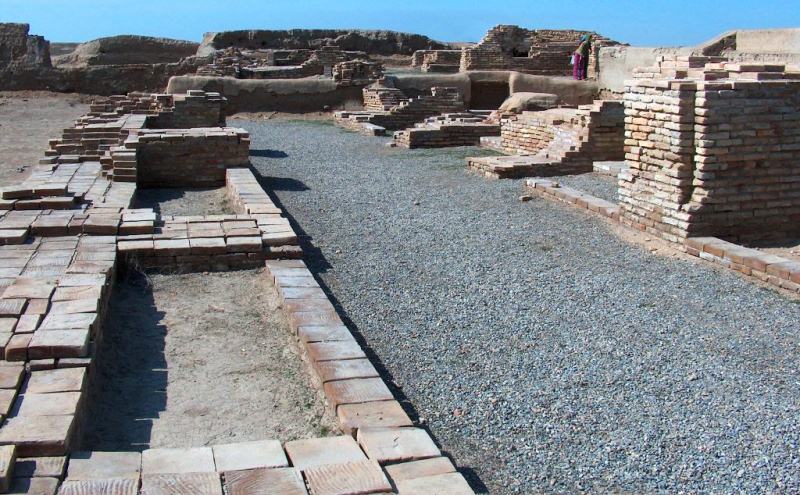
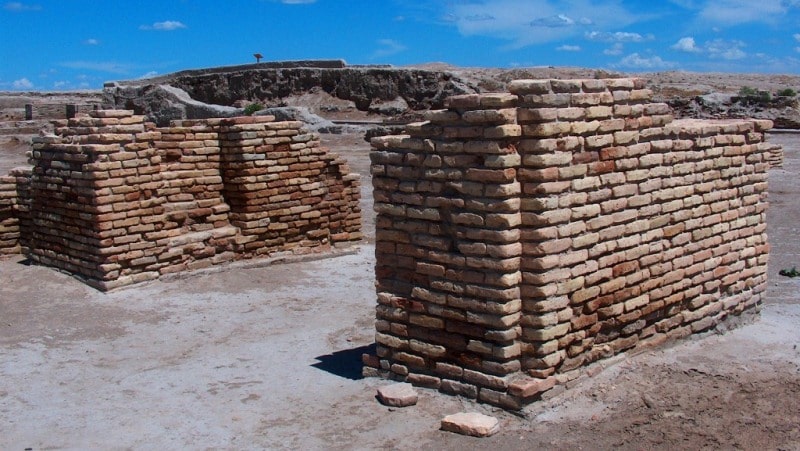
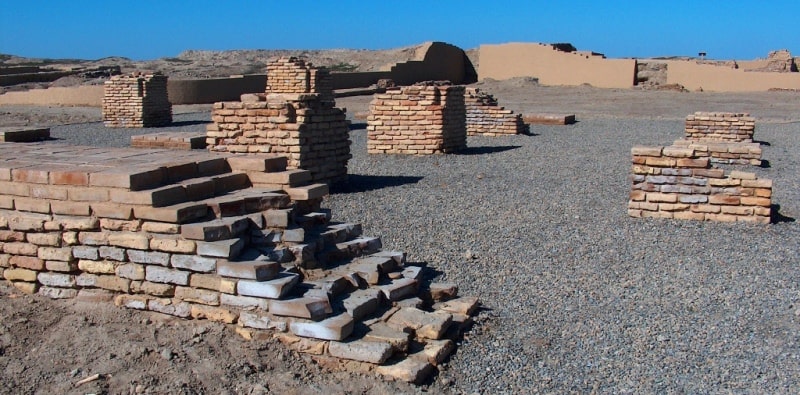
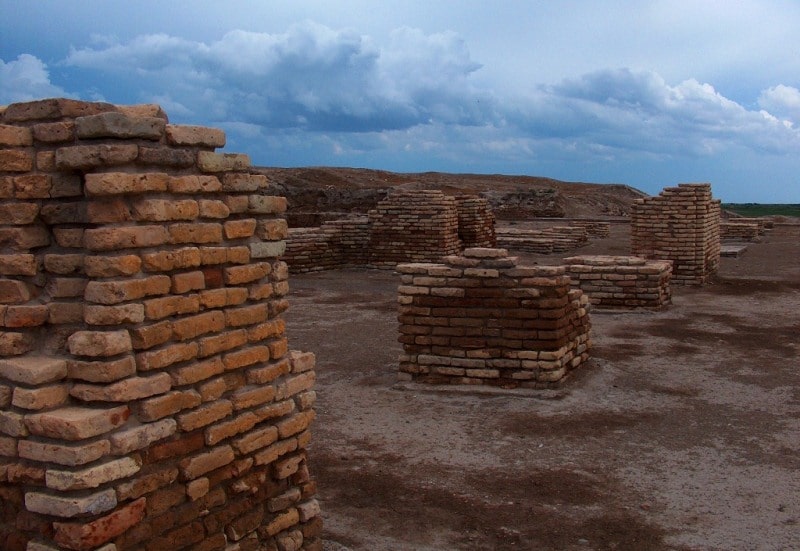
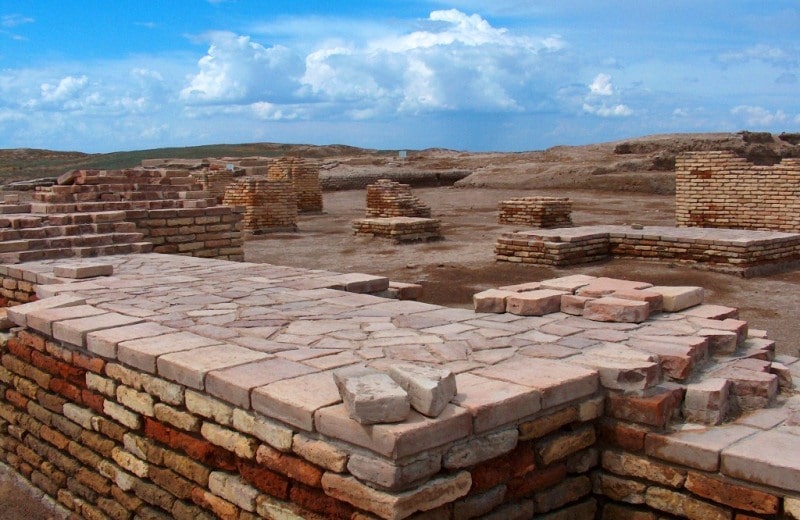
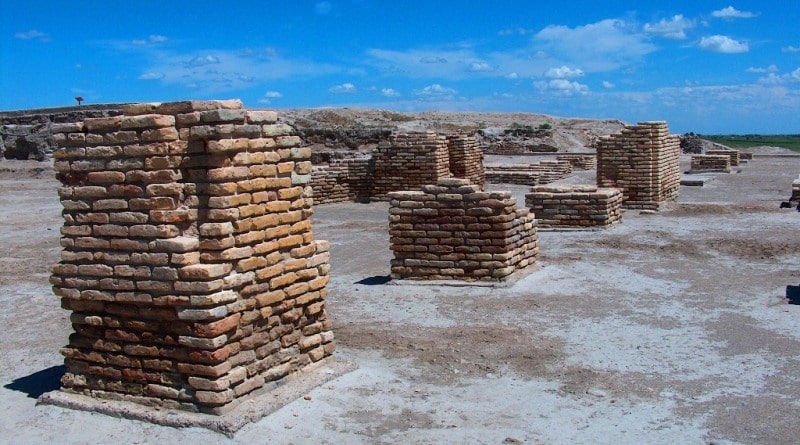
Authority:
Baypakov K. M. 1973. Residential quarters of late medieval Otrar and issues of historical demography. Tashkent.
1977. About localization of late medieval cities of Kazakhstan. Soviet archeology 2.
1986. Medieval urban culture of South Kazakhstan and Semirechye (VI - early XIII century). Alma-Ata: Science.
1998. Medieval cities of Kazakhstan on the Great Silk Road. Almaty.
1999. Ancient and medieval Otrar. The city of Turkestan. Almaty.
Photos by
Alexander Petrov.







